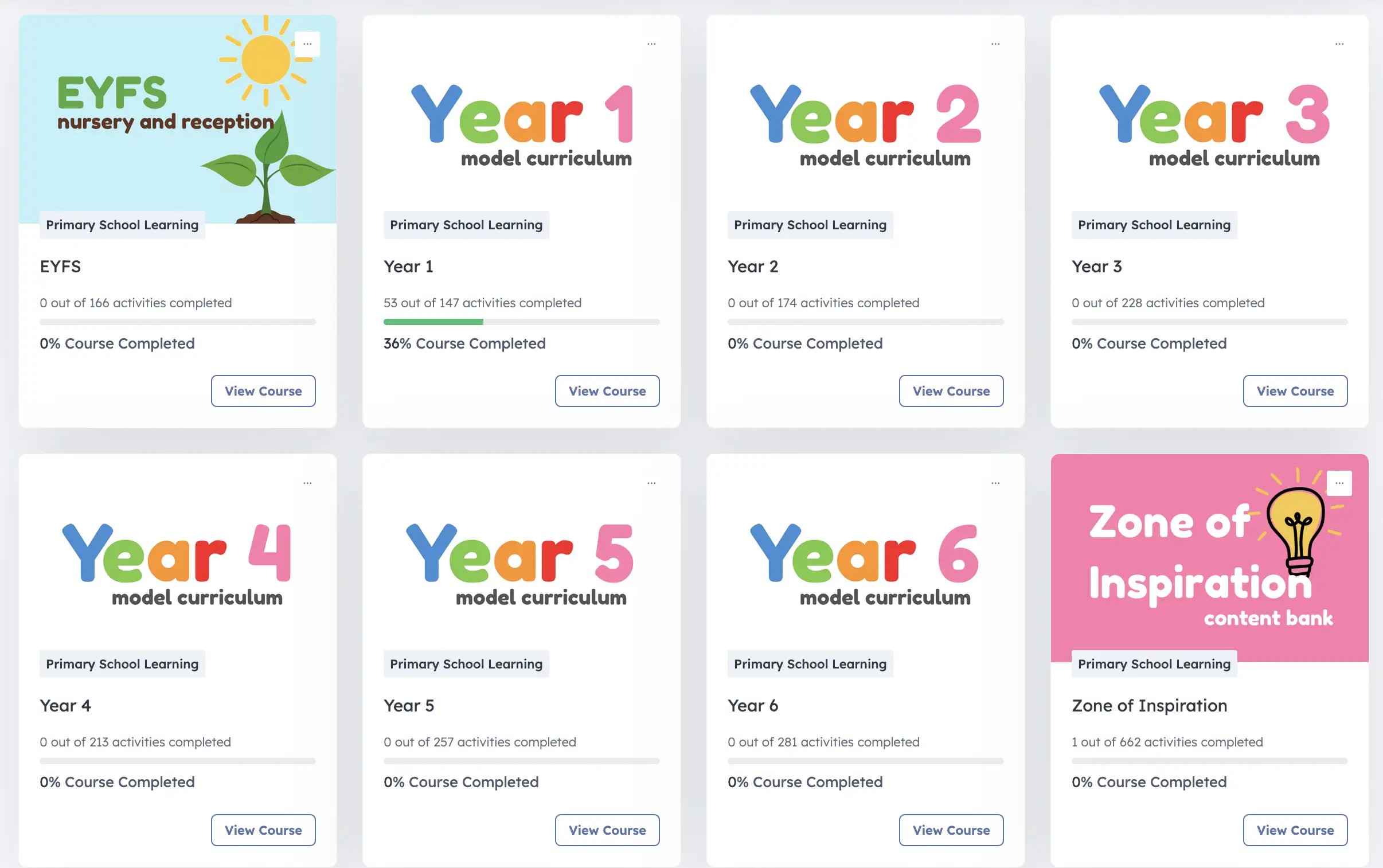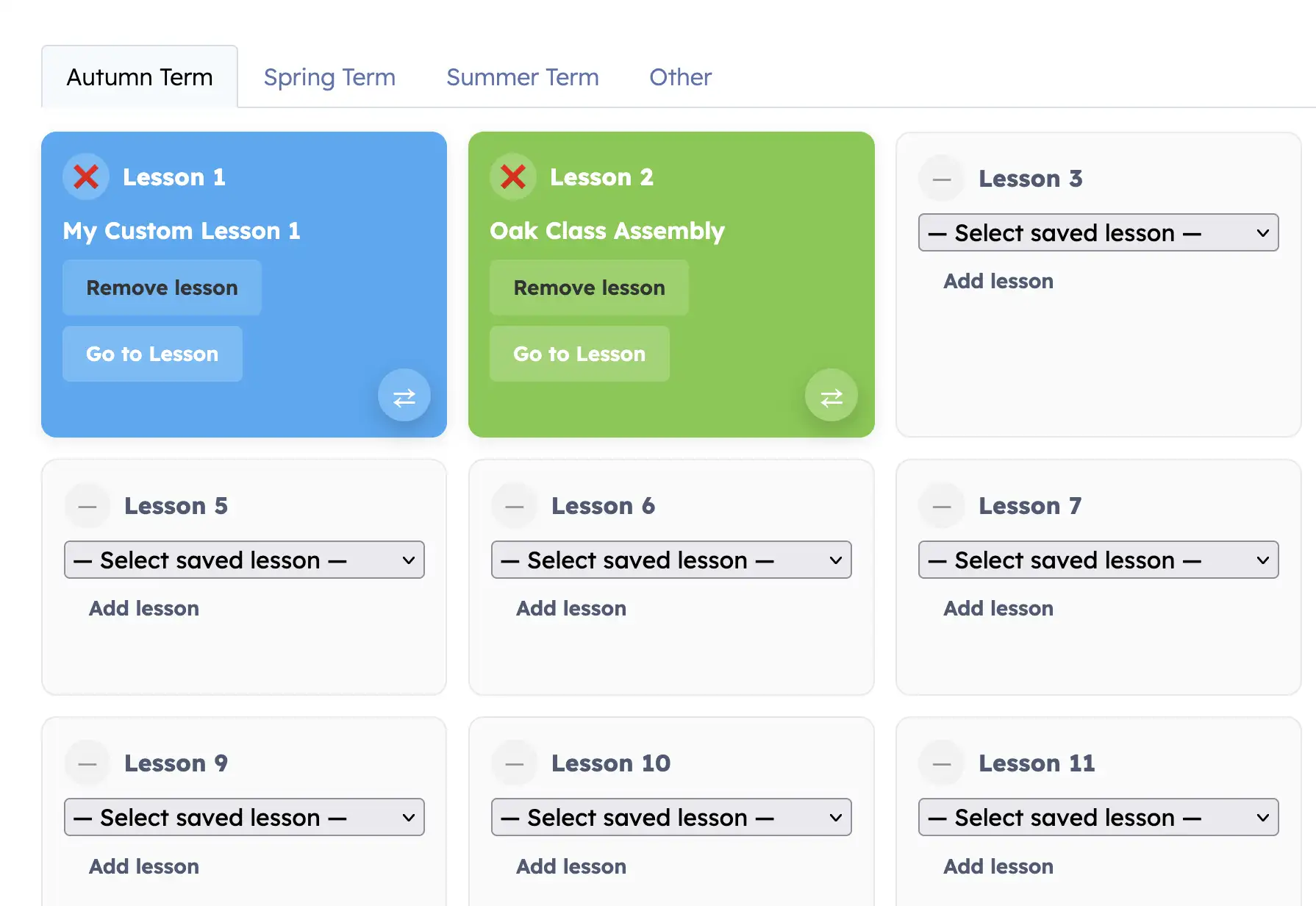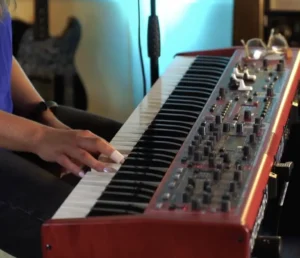
Every scheme is designed for real primary timetables: short, focused activities that fit your day, clear outcomes, and plenty of repetition where it matters for musical development.
EYFS includes 12 sessions across the year. We encourage repeating these sessions to consolidate early listening, pulse, movement, and playful vocal work. Each activity is short, practical, and language-rich, supporting Communication & Language and Expressive Arts & Design.
Sessions can be woven flexibly through the day — for example, a quick musical starter in the morning, a movement game after break, and a song before home time. These sessions provide a foundation for children’s musical journey, ensuring key skills are embedded early – and you can build on this with extra songs, stories, and creative play as fits your setting.
For Years 1–6, each year has 6 sessions per term — Autumn, Spring, Summer — giving 18 pre-curated lessons per year. Activities are sequenced to revisit and extend core skills across the year.
Music isn’t always weekly in every school, so schemes target priority outcomes and work flexibly with the time you have. Sessions can be delivered whole or in chunks; as long as you complete the activities, pupils receive a rich musical experience.
These sessions act as a baseline to make sure your class achieve their outcomes – and you can extend beyond this to enrich learning further.
All activities are mapped to the National Curriculum learning outcomes for music. See the DfE programmes of study: Primary National Curriculum – Music (PDF).

Professionally sequenced units for EYFS–Year 6 with clear coverage and outcomes. Launch activities on your whiteboard — no extra prep.

Prefer to tailor? Use the Designer to build custom units from our Content Bank (600+ activities) — save, reuse, and adapt for mixed-age classes.
This is the normal lesson view in Kidstrument — the full teacher layout you’ll use in class.




600+ activities just like these build our Schemes of Work.
Each scheme gives pupils meaningful exposure to genres they might not otherwise encounter. Activities are built around these songs so children learn the feel, instruments, and stories of each style — and the songs are simply loved by pupils.
Soulful, expressive music that opens discussion about roots and influence on modern styles.
Syncopation and swing through vibrant ensemble playing and improvisation.
Energy, backbeat, and call-and-response — great for rhythm work and performance.
Hooks, harmony, and groove — perfect for ensemble singing and arrangement talk.
From British Invasion to psychedelia — riffs, structure, and texture.
Interlocking rhythms and syncopation that sharpen timing and listening.
Four-to-the-floor feel, basslines, and strings — movement and form made clear.
Production, melody, and songcraft — a springboard for composition.